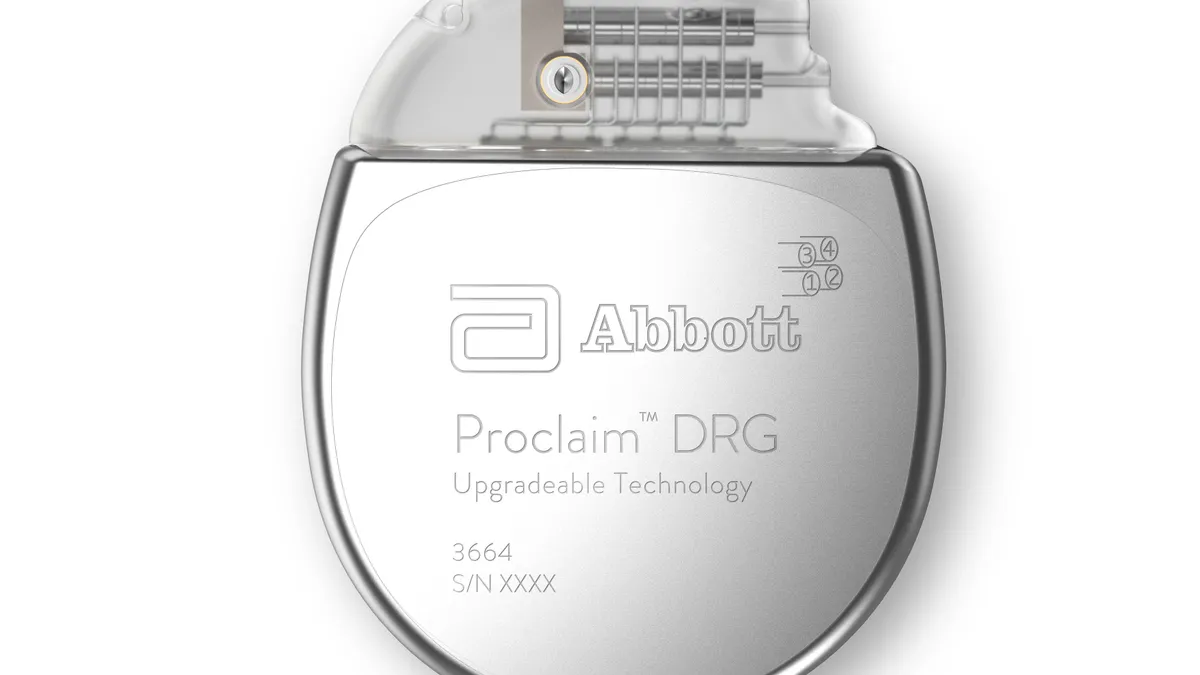Dive Brief:
- Abbott has won Food and Drug Administration approval for a spinal cord stimulation system that is designed to treat multi-site and evolving pain.
- The system, Proclaim Plus, offers pain coverage across up to six areas and enables physicians to tweak the programming in response to the changing needs of the patient.
- Securing the FDA approval gives Abbott a new angle to push as it seeks to increase its share of the spinal cord stimulation market, where it competes with Boston Scientific, Medtronic and Nevro.
Dive Insight:
Proclaim Plus builds on the features Abbott has developed to differentiate its spinal cord stimulator. The system uses an updated version of Abbott’s BurstDR stimulation, branded FlexBurst360, that delivers packets of pulses of electrical energy at a high frequency and at lower amplitudes than traditional tonic stimulation. It also uses a 10-year, recharge-free battery and connected care technology.
Steven Falowski, of the physician group Argires Marotti Neurosurgical Associates, set out how the new system improves on its predecessor in Abbott’s statement to disclose the FDA approval of Proclaim Plus.
“Despite the many benefits of BurstDR, such as being effective as a low-energy stimulation therapy, some patients continue to be burdened by pain because of multiple painful areas and evolving pain over time. Now, with Proclaim Plus and FlexBurst360, an already established platform has been improved to treat more patients who suffer from pain across different body parts and changing pain over time,” Falowski said in the news release.
Abbott is pitching Proclaim Plus as a way for physicians to target pain in up to six areas of the trunk and limbs and adjust the stimulation to each area to provide relief without raising the risk of overstimulation. Using the NeuroSphere Virtual Clinic, physicians can remotely communicate with patients and adjust the settings of the spinal cord stimulation system.
Each of Abbott’s competitors has its own pitch for the superiority of its system, with Medtronic focusing on its proprietary waveform, which it calls differential target multiplexed technology, and Nevro providing stimulation at a higher frequency than its peers.













